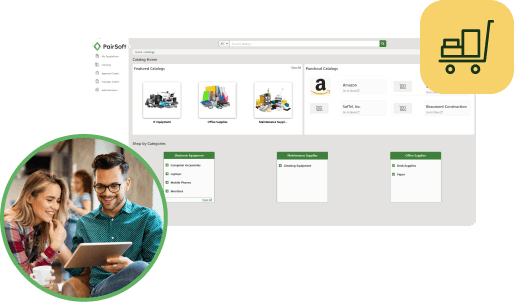
Procure-To-Pay Life Cycle | Purchase to Payment Cycle| PairSoft WP
Hayley Campbell

Procurement
Blog
Glossary of Terminology in Procure-to-Pay Life Cycle
There are many steps between the time you first engage with a new supplier to the time you make a payment to them for their products and services. For companies who are looking to improve their bottom line by controlling spend before it happens while also automating procurement and payables, the process needs to start long before the AP invoice ever exists.
We’ve compiled this glossary of terminology used in the procure-to-pay cycle to help you understand all the components of an effective process.
Ad hoc approvals: Introducing additional purchase approval requirements on the fly while maintaining policies and controls to your original defined configuration.
AP Automation: One component of the P2P lifecycle, AP Automation typically involves electronic invoice routing and approval and sometimes electronic payment. Read Spend Management Meets AP Automation
Check request: Request approval for payment on non-PO invoices.
eProcurement: Automated, electronic procurement (see Procurement)
Guided Buying Catalog: Using your own catalog, pictures, extended descriptions, and company-selected items to enhance user shopping experience while restricting purchases to approved items/vendors.
OCR (Optical Character Recognition):
P2P: “Procure to Pay.” The cycle from supplier management to procurement, invoice processing, and ultimately vendor payment.
Procurement: The act of obtaining or buying goods and services.
Punchout Catalog: a method for a purchasing agent to buy from a supplier’s website from within the buyer’s own procurement application.
Purchase Order (PO): A buyer-generated document that authorizes a purchase transaction. A purchase order sets forth the descriptions, quantities, prices, discounts, payment terms, date of performance or shipment, other associated terms and conditions, and identifies a specific seller.
Receipt of goods: The process of documenting items and quantities received and matching them to the purchase order.
Request for Quote (RFQ): Obtaining pricing and delivery estimates from multiple vendors to secure the best deal on a purchase.
Requisition: An internal document requesting approval to purchase goods and services. Once it has met all approval requirements, a requisition can be converted into a PO.
Rogue spending (or Maverick spending): When purchases are made that are outside the controls set in place by a business. The result is often, purchases from suppliers who have not been vetted and overpaying for products because they could have been purchased for less elsewhere under negotiated pricing.
Rules-based routing & approvals: Established processes for distributing documents for approval to the correct approvers based on preset rules. For example, routing to specific approvers based on criteria such as vendor, amount, department, GL account, budget, project, expense type, etc.
Spend management: Tracking and measuring expenditures before spending occurs. This allows companies to control expenses, comply with industry and business mandates, and grow their profitability.
Strategic sourcing: The process of developing supply channels at the lowest total cost, not just the lowest purchase price. Read Putting the “Strategic” in Strategic Sourcing
Supplier Management: Vendor self-service tools that allow you to automate many of the interactions with suppliers, such as invoices, contract management, vendor approvals, and RFQs.
Vendor Contract Management: Process of enforcing vendor-negotiated terms and providing blanket purchase orders.
Vendor Invoice Portal: Empower vendors and suppliers with a self-service portal for purchase order/non-purchase order invoice entry.
As you can see, the Procure-to-Pay process expands well beyond receiving invoices and making payments. PairSoft offers ERP-integrated solutions that allow you to have a repeatable process that’s easy for employees and effective for your business.
What's stopping your procurement process?
Talk to an expert today to uncover how your team’s procurement stacks up against the top performers in your sector.


Simple solutions. Powerful results. Seamlessly integrated.



